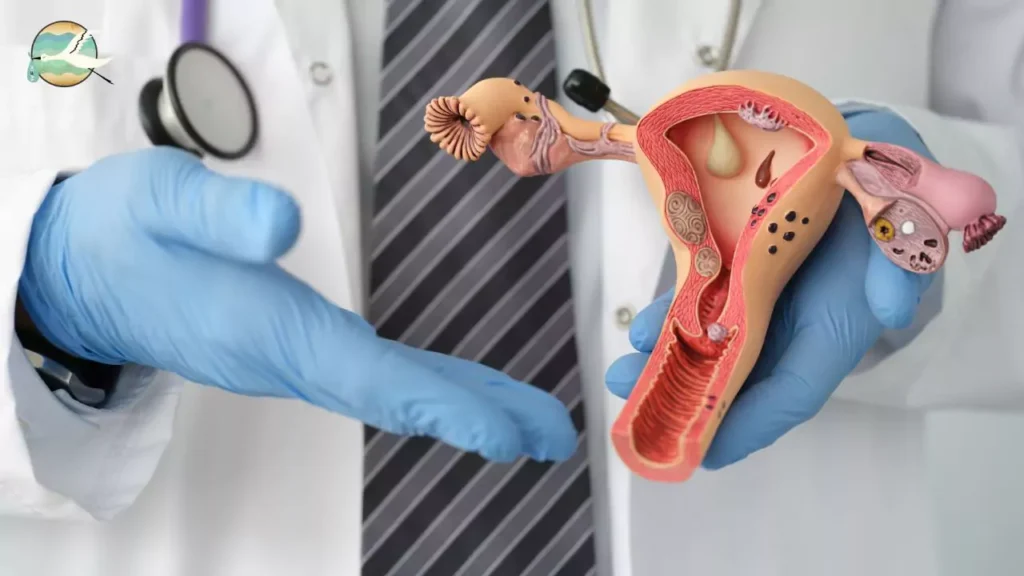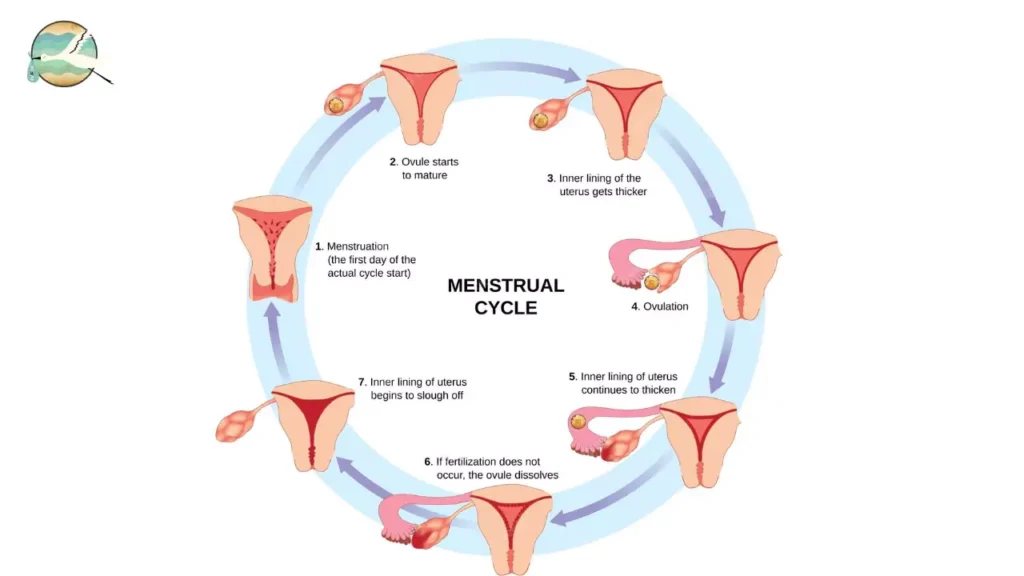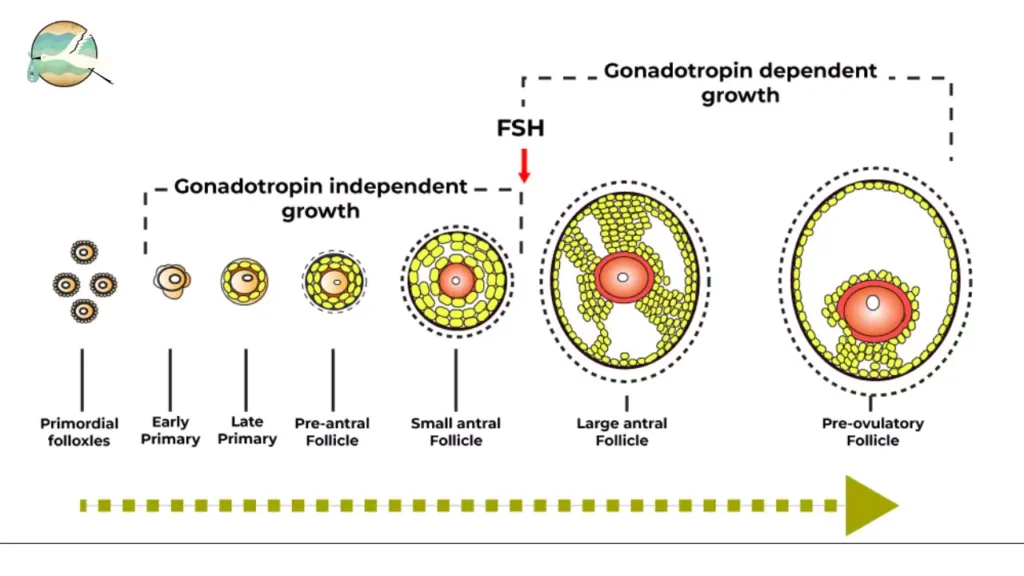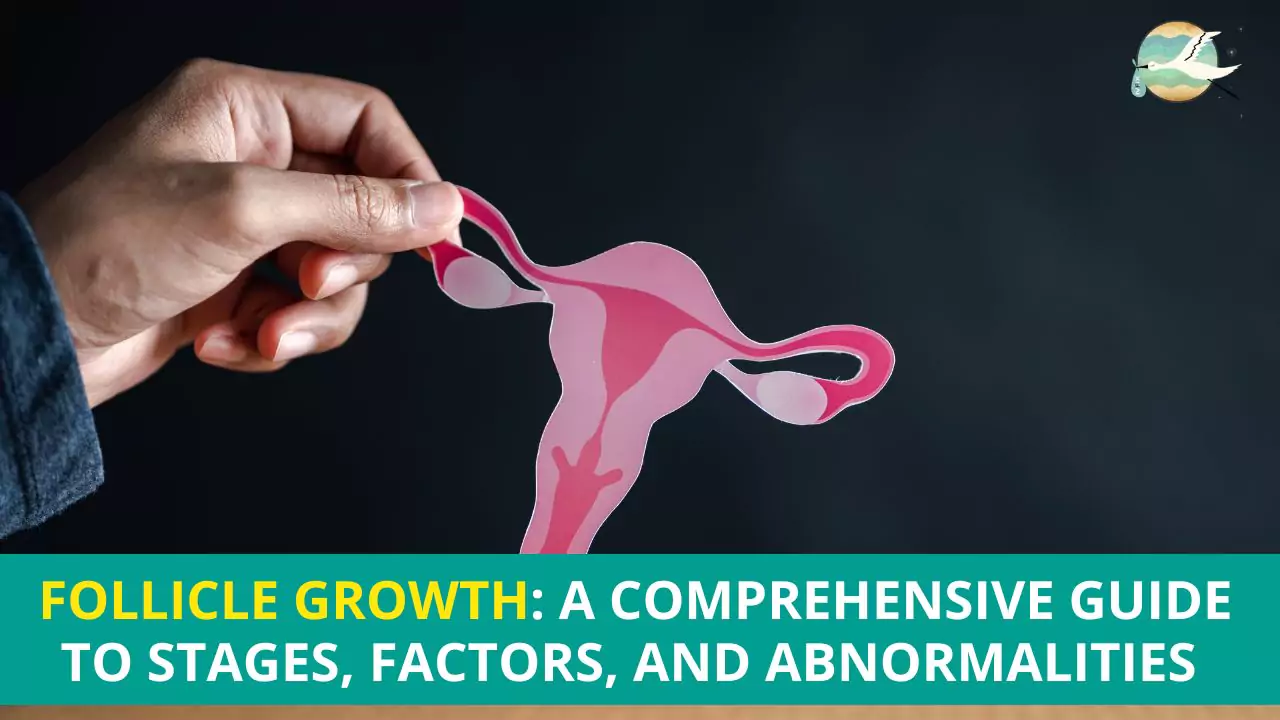Follicle growth is a crucial process for female fertility. Learn about the stages of follicle growth, the factors that affect it, and how abnormalities can impact fertility. Get expert insights on the latest treatments for abnormal follicle growth.
Table of Contents
In the female reproductive cycle, the follicular phase is characterized by the growth and development of follicles in the ovaries. Follicles are tiny sacs that contain immature eggs (oocytes). During the follicular phase, a select group of follicles begins to grow and mature. The dominant follicle, which is the largest and most mature follicle, will eventually release an egg during ovulation.
The rate of follicle growth per day varies according to the follicular phase. Follicles grow slowly in the early follicular phase, at a rate of about 0.1-0.2 millimeters (mm) per day. The growth rate accelerates as the follicular phase progresses. The dominant follicle grows at a rate of about 1-2 mm per day during the late follicular phase.

How much follicle growth per day
Follicles grow at a rate of 1.5-2.5 mm per day on average. The exact growth rate, however, can vary depending on a number of factors, including:
- The individual’s hormonal levels. The hormones FSH (follicle-stimulating hormone) and LH (luteinizing hormone) stimulate follicle growth. FSH and LH levels that are higher can result in faster follicle growth.
- The stage of the menstrual cycle. In the early follicular phase of the menstrual cycle, follicles grow at a faster rate.
- The woman’s age. it slows as women get older.
- Ovarian reserve. Ovarian reserve is a measure of a woman’s remaining eggs. Women with low ovarian reserve may have fewer follicles or follicles that grow more slowly.
Follicles will typically reach a diameter of 18-25 mm before ovulation. When a follicle reaches this size, it is considered mature. During ovulation, the mature follicle will release an egg.
The following table shows the average follicle growth per day at different stages of the menstrual cycle:
| Stage of menstrual cycle | Follicle diameter | Follicle growth per day |
|---|---|---|
| Early follicular phase | 2-5 mm | 1.0-1.5 mm |
| Late follicular phase | 10-15 mm | 1.5-2.0 mm |
| Preovulatory phase | 15-25 mm | 2.0-2.5 mm |
It is important to note that these are only averages. The rate at which follicles grow varies from person to person. If you are concerned about it, you should consult your doctor.
What factors can affect the rate of follicle growth?

The following factors can influence follicle growth rate:
- Hormonal levels: The hormones FSH (follicle-stimulating hormone) and LH (luteinizing hormone) stimulate it. FSH and LH levels that are higher can result in faster follicle growth.
- Stage of the menstrual cycle: In the early follicular phase of the menstrual cycle, follicles grow at a faster rate.
- Age: It slows as women age.
- Ovarian reserve: Ovarian reserve is a measurement of a woman’s remaining eggs. Women with low ovarian reserve may have fewer or slower-growing follicles.
- Body mass index (BMI): Women with an abnormally high or low BMI may have a slower it.
- Medical conditions: It can be influenced by medical conditions such as PCOS or thyroid issues.
- Lifestyle factors: Smoking, excessive alcohol consumption, and a sedentary lifestyle can all have an impact on follicle growth.
Individual variation can also affect the rate of follicle growth in addition to these factors. Some women simply have follicles that grow faster or slower than others.
It is important to note that it is a complex process that is influenced by a variety of factors. The factors listed above are only a few of the most important. If you are concerned about your follicle growth, you should consult your doctor.
What are the different stages of follicle growth?

Follicle growth is a multi-month process. The stages of follicle development are as follows:
Primordial follicles: Primordial follicles are the smallest and most immature type of follicle. They contain an oocyte surrounded by a single layer of granulosa cells. Primordial follicles are found in the ovary’s outer layer and do not grow or develop until they are activated.
Primary follicles: Once activated, a primordial follicle begins to grow and develop into a primary follicle. The granulosa cells that surround the oocyte start to multiply, and the follicle grows in size.
Secondary follicles: Secondary follicles continue to develop and grow. The granulosa cells organize themselves into layers, and the oocyte begins to mature. The follicle also starts producing fluid, which forms a small cavity known as the antrum.
Antral follicles: Secondary follicles are smaller than antral follicles. The antrum continues to develop, and the oocyte matures. The granulosa cells begin to produce estrogen as well.
Graafian follicles: Graafian follicles are the largest and most mature type of follicle. They are ready to ovulate and release the egg. The follicle wall is thin and weak, and the antrum is filled with fluid. The oocyte is found on a mound of granulosa cells known as the cumulus oophorus.
Several follicles start to grow and develop during the menstrual cycle. However, only one follicle typically matures and ovulates. The remaining follicles die and are absorbed by the body, a process known as atresia.
The dominant follicle is the one that produces the most estrogen. Estrogen levels rise during the follicular phase of the menstrual cycle. The increase in estrogen causes the release of LH, which causes ovulation.
Ovulation occurs approximately 14 days before the start of your next menstrual period. The empty follicle forms a corpus luteum after ovulation. Progesterone and estrogen are produced by the corpus luteum. If there is no pregnancy, the corpus luteum degenerates, and progesterone levels fall. Menstruation begins when progesterone levels fall.
The stages of follicle development are critical for reproduction. Follicles provide the environment in which the oocyte can mature. They also make hormones that control the menstrual cycle. It is a complex process that is influenced by a variety of factors. If you are concerned about your follicle growth, consult your doctor.
How can I measure follicle growth?
Ultrasound can be used to measure it. Transvaginal ultrasound is the preferred method for measuring follicle growth because it provides the clearest images of the ovaries.
A probe is inserted into the vagina during a transvaginal ultrasound to obtain images of the ovaries. The probe sends out high-frequency sound waves that bounce off the tissues in the ovaries. The reflected sound waves are used to generate an image of the ovaries on a screen.
The doctor or technician will measure the diameter of each follicle. The diameter of a follicle is the distance across the widest part of the follicle. Antral follicles are 2-9 mm in diameter. Mature follicles have a diameter of 10-25 mm.
Blood tests can also be used to assess follicle growth. Estradiol levels rise as a follicle develops. A surge in estradiol causes the release of LH, which results in ovulation. As a result, blood tests can be used to monitor the growth of follicles.
Here is a list of methods for measuring follicle growth:
- Transvaginal ultrasound: This is the most commonly used method of determining follicle growth. It is precise and non-invasive.
- Blood tests: Estradiol levels can be used to monitor the growth of follicles. Blood tests, on the other hand, are not as precise as ultrasound.
- Serial examinations: To track the growth of follicles, the doctor or technician may perform multiple ultrasound examinations over a period of several days.
- Doppler ultrasound: Doppler ultrasound can be used to assess blood flow to the ovaries. Increased blood flow indicates the development of a follicle.
The best method for measuring it will be determined by your unique circumstances. If you are concerned about your follicle growth, you should consult your doctor. They can recommend the best method for you.
How does follicle growth differ in women with fertility problems?

Follicle growth in women experiencing fertility issues may differ in the following ways:
Anovulation: Anovulation is defined as the absence of ovulation. This can be caused by a number of conditions, including PCOS, hypothalamic amenorrhea, and hyperprolactinemia. Women who suffer from anovulation may not produce follicles at all, or they may produce follicles that do not grow or mature properly.
Polycystic ovary syndrome (PCOS): PCOS is a common hormonal disorder that can impair follicle growth. Women with PCOS typically have multiple small follicles on their ovaries. These follicles may not grow or mature properly, and they may not ovulate.
Diminished ovarian reserve: DOR is a condition in which a woman has fewer eggs than usual. Age, premature ovarian failure, or chemotherapy or radiation treatment can all cause this. DOR can cause fewer follicles or follicles that do not grow or mature properly.
High FSH (follicle-stimulating hormone) levels: FSH is a hormone that stimulates follicle growth. High FSH levels can indicate DOR or premature ovarian failure. Women with high FSH levels may have fewer follicles or follicles that do not grow or mature properly.
Endometriosis: Endometriosis is a condition in which endometrial tissue grows outside of the uterus. Endometriosis can affect the ovaries and interfere with follicle growth.
The specific ways in which follicle growth differs in women with fertility issues will depend on the underlying cause of the infertility. However, women with fertility issues may have fewer follicles, follicles that grow more slowly, or follicles that do not grow or mature properly. This can make it difficult or impossible to ovulate.
If you are concerned about your follicle growth, you should consult your doctor. They can assess your ovarian reserve and order tests to determine the cause of your infertility. Once the cause of your infertility has been identified, your doctor can recommend the best treatment for you.
What are the implications of abnormal follicle growth?

Depending on the nature of the abnormality, abnormal follicle growth can have a variety of fertility implications. Some possible consequences include:
- Anovulation: Follicles that do not grow or mature properly may not ovulate. This can result in infertility.
- Irregular menstrual cycles: Inadequate follicle growth can also result in irregular menstrual cycles. This could be a sign of a hormonal disorder, such as PCOS.
- Polycystic ovary syndrome (PCOS): PCOS is a common hormonal disorder marked by numerous small follicles on the ovaries. These follicles may not mature or grow normally, and they may not ovulate. PCOS is a leading cause of female infertility.
- Diminished ovarian reserve (DOR): DOR is a condition in which a woman has fewer eggs than usual. This can make it more difficult to conceive, especially as you get older.
- Early menopause: The cessation of menstruation before the age of 40 is referred to as early menopause. A variety of factors, including abnormal follicle growth, can contribute to it.
- Miscarriage: Abnormal follicle growth may also be linked to an increased risk of miscarriage.
The implications of abnormal follicle growth will differ depending on the underlying cause and the circumstances of the individual. However, it is critical to be aware of the potential dangers of this condition. Consult your doctor if you are concerned about your follicle growth. They can evaluate your ovarian reserve and order tests to figure out what’s wrong. Once the underlying cause has been identified, your doctor can recommend the best course of action.
There are several treatments available for abnormal follicle growth. The specific treatment will be determined by the underlying cause. Some common treatments include:
- Hormonal therapy: Hormonal therapy can be used to control hormone levels and stimulate follicle growth.
- Ovulation induction: To stimulate the growth and release of mature eggs, ovulation induction medications can be used.
- In vitro fertilization (IVF): IVF is a procedure in which eggs are harvested from the ovaries and fertilized in a laboratory with sperm. The fertilized eggs are then implanted in the uterus.
- Donor eggs: If you are unable to produce your own eggs, donor eggs may be used for IVF.
The best treatment for abnormal follicle growth will be determined by your unique situation. If you are thinking about getting treatment, talk to your doctor about the risks and benefits of each option.
How does follicle growth vary throughout the menstrual cycle?
Follicle growth differs throughout the menstrual cycle in the following ways:
Early follicular phase: Several follicles begin to grow and develop during the early follicular phase. However, only one follicle usually matures and ovulates. The follicle that produces the most estrogen is known as the dominant follicle.
Mid follicular phase: As the dominant follicle matures, it produces more estrogen. Estrogen levels rise throughout the follicular phase.
Late follicular phase: The increase in estrogen causes the release of LH, which causes ovulation. The dominant follicle ruptures and releases the egg.
Luteal phase: After ovulation, the empty follicle develops into a corpus luteum. The corpus luteum produces progesterone and estrogen. If a pregnancy does not occur, the corpus luteum degenerates, and progesterone levels fall. This drop in progesterone causes menstruation to begin.
Here is a more detailed explanation of how it changes throughout the menstrual cycle:
- Days 1-5: Menstruation. The uterus lining sheds.
- Days 6-12: Early follicular phase. Several follicles begin to grow and develop. The dominant follicle begins to emerge.
- Days 13-15: The follicular phase is in the middle. The dominant follicle continues to grow and produce estrogen.
- Day 16: Ovulation. The dominant follicle ruptures and the egg is released.
- Days 17-24: The luteal phase. Progesterone and estrogen are produced by the corpus luteum.
- Days 25-28: Premenstrual syndrome (PMS). The corpus luteum degenerates and progesterone levels fall. Menstruation begins as a result of this.
The length of the menstrual cycle varies from woman to woman. The follicular phase, on the other hand, lasts 14-15 days, while the luteal phase lasts 12-14 days. Ovulation usually occurs 14 days before the start of the next menstrual period.
The rate of follicle growth varies from woman to woman. However, follicles typically grow at a rate of 1.5-2.5 mm per day. Before ovulation, the dominant follicle will have a diameter of 18-25 mm.
It is required for reproduction. Follicles provide the environment for the oocyte to mature. They also produce hormones that regulate the menstrual cycle. Follicle growth is a complicated process that is influenced by a variety of factors. If you have any concerns about your follicle growth, you should consult your doctor.
Tips for Healthy Follicle Growth
There are several things you can do to promote healthy follicle growth:
- Maintain a healthy weight: Obesity can impair follicle growth.
- Eat a healthy diet: A diet high in fruits, vegetables, and whole grains can supply your body with the nutrients it requires for healthy follicle growth.
- Get regular exercise: Exercise can help with hormone balance and follicle growth.
- Manage stress: Ovulation can be disrupted by stress. Find healthy ways to manage stress, such as yoga, meditation, or spending time in nature.
- Avoid smoking and excessive alcohol consumption: Smoking and excessive alcohol consumption can harm the ovaries and impair follicle growth.
- Get enough sleep: Sleep is required for the production and regulation of hormones. Attempt to get 7-8 hours of sleep per night.
- See your doctor for regular checkups: Regular checkups can assist in identifying any underlying health conditions that may be affecting your fertility.
Conclusion
Finally, follicle growth is a complex process that is required for reproduction. Follicles provide the environment for the oocyte to mature. They also produce hormones that regulate the menstrual cycle. It is influenced by a number of factors, including hormonal levels, menstrual cycle stage, age, ovarian reserve, and individual variation.
Abnormal follicle growth can have a variety of fertility implications. These implications can vary depending on the nature of the abnormality. Anovulation, irregular menstrual cycles, PCOS, DOR, early menopause, and miscarriage are all possible consequences.
If you are concerned about your follicle growth, you should consult your doctor. They can assess your ovarian reserve and order tests to determine the cause of any abnormalities. Once the cause has been determined, your doctor can recommend the best course of action. Treatments for abnormal follicle growth include hormonal therapy, ovulation induction, IVF, and donor eggs.
The best treatment for abnormal follicle growth will be determined by your unique circumstances. If you are considering treatment, speak with your doctor about the risks and benefits of each option.




